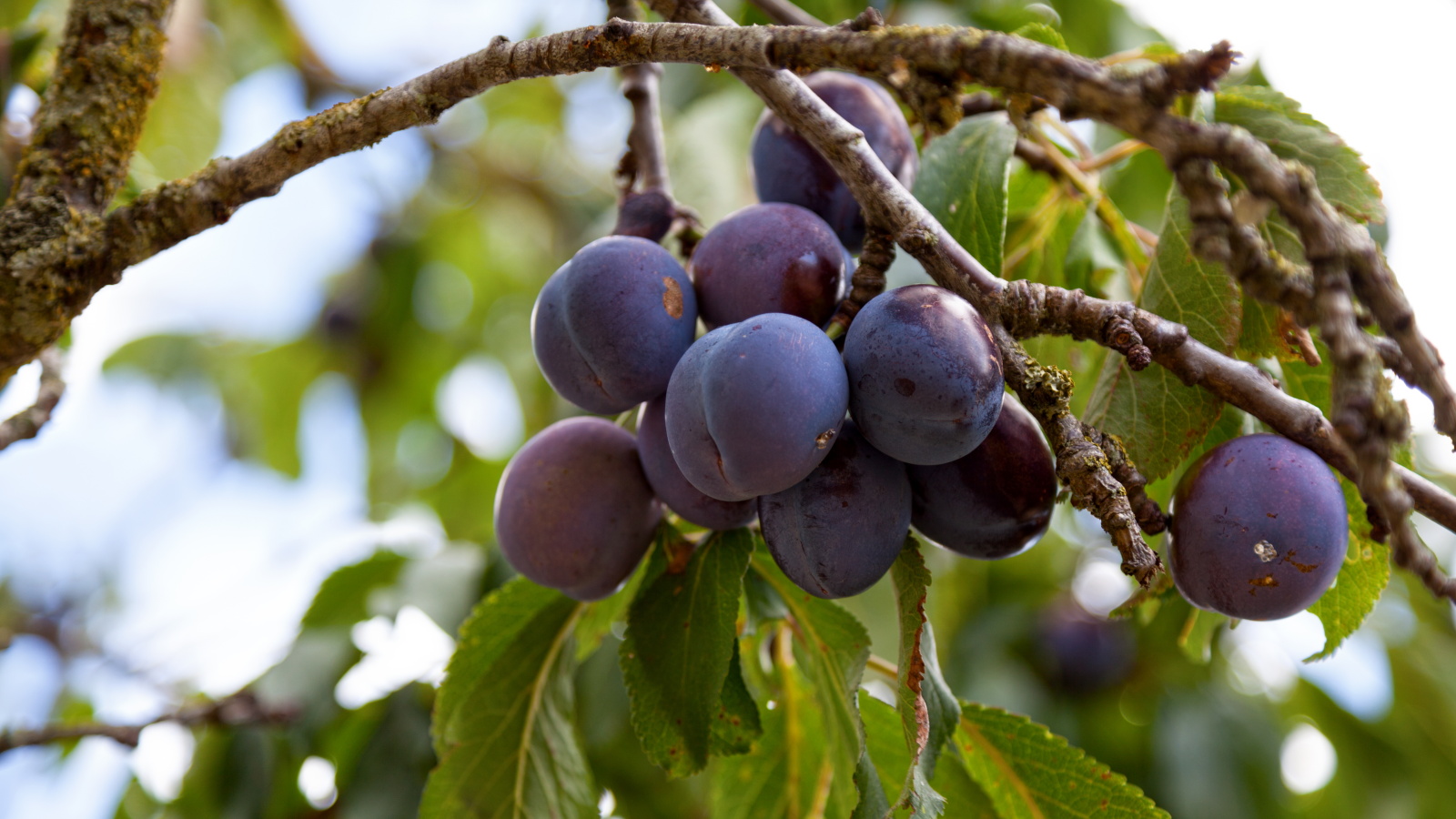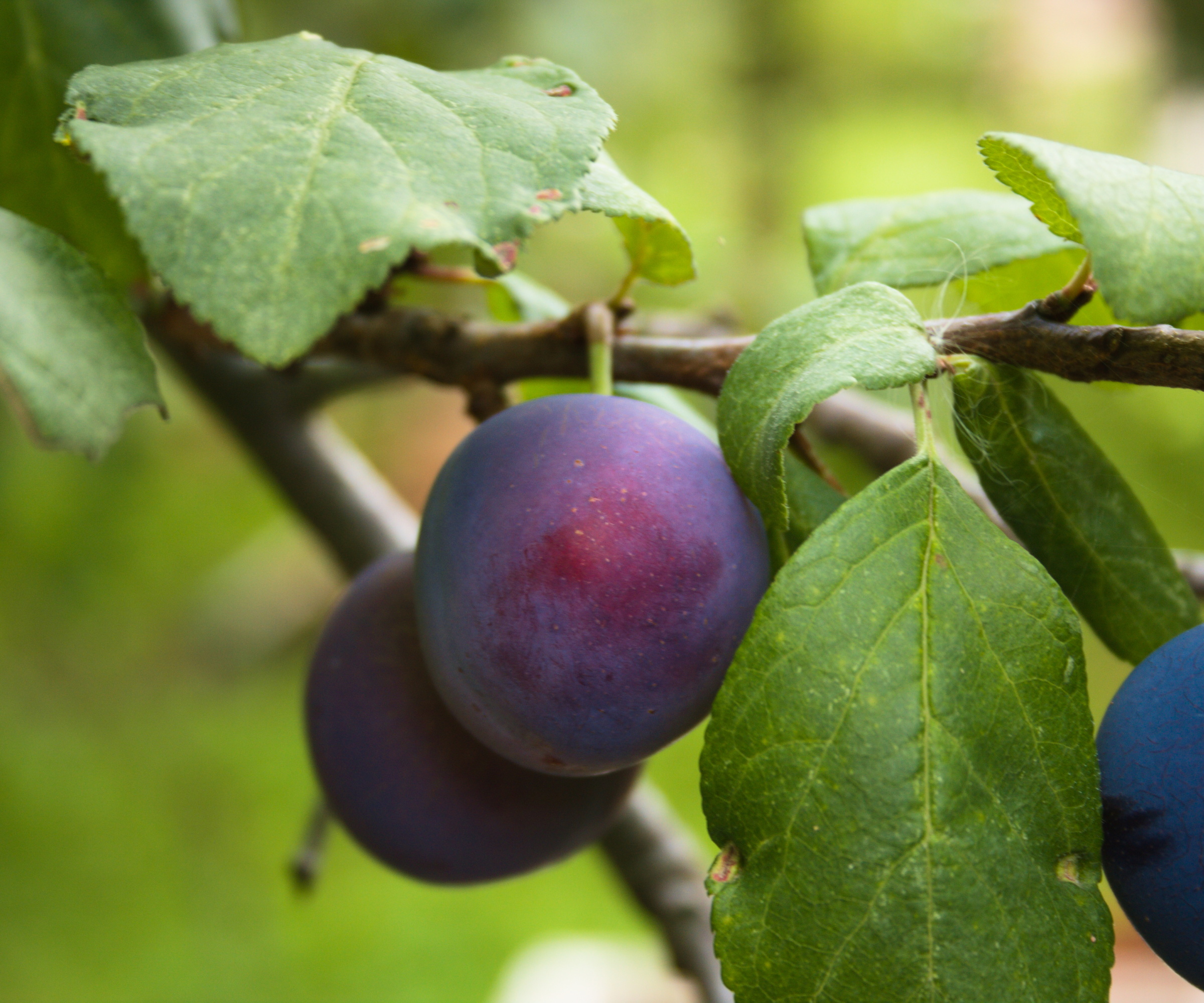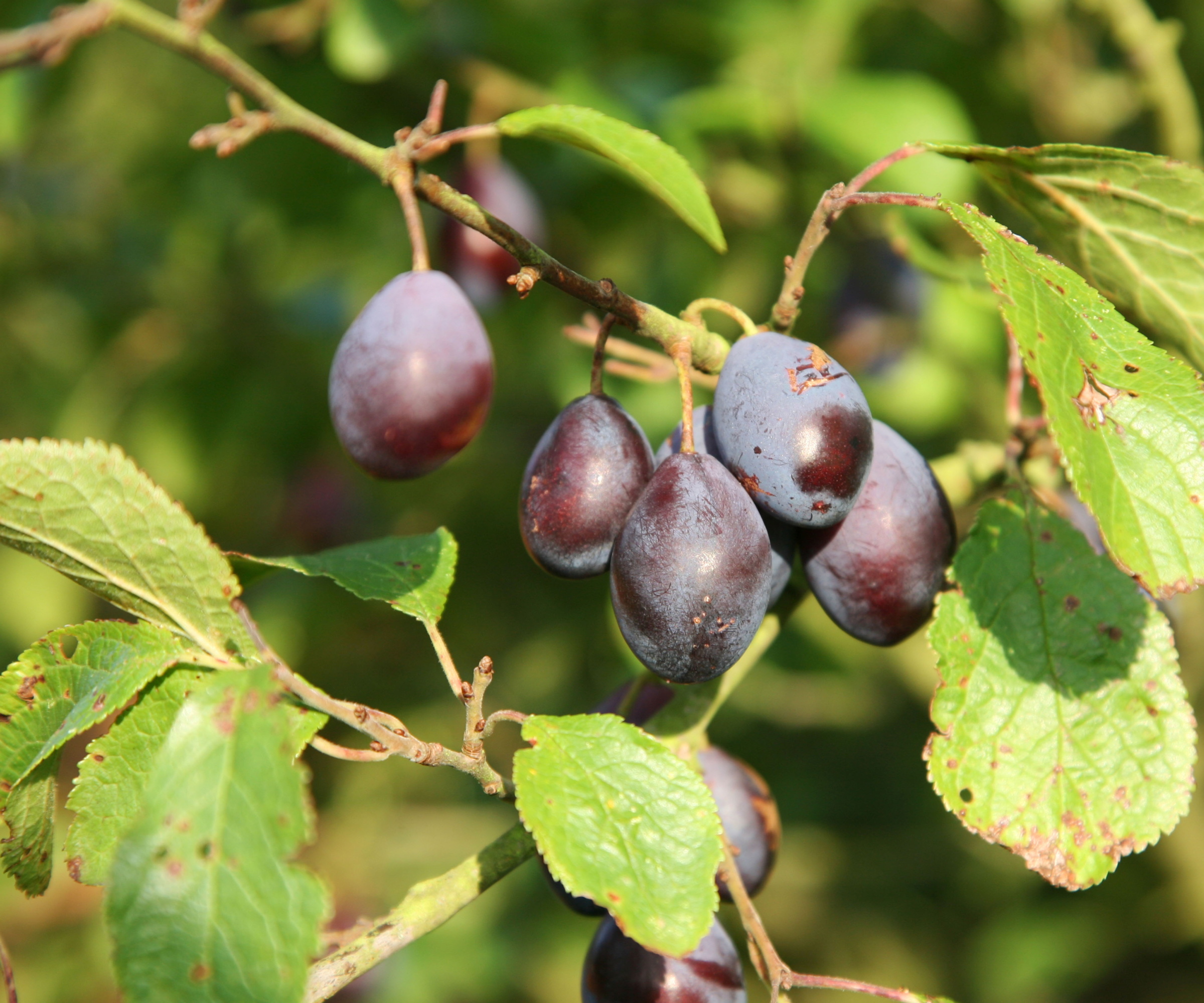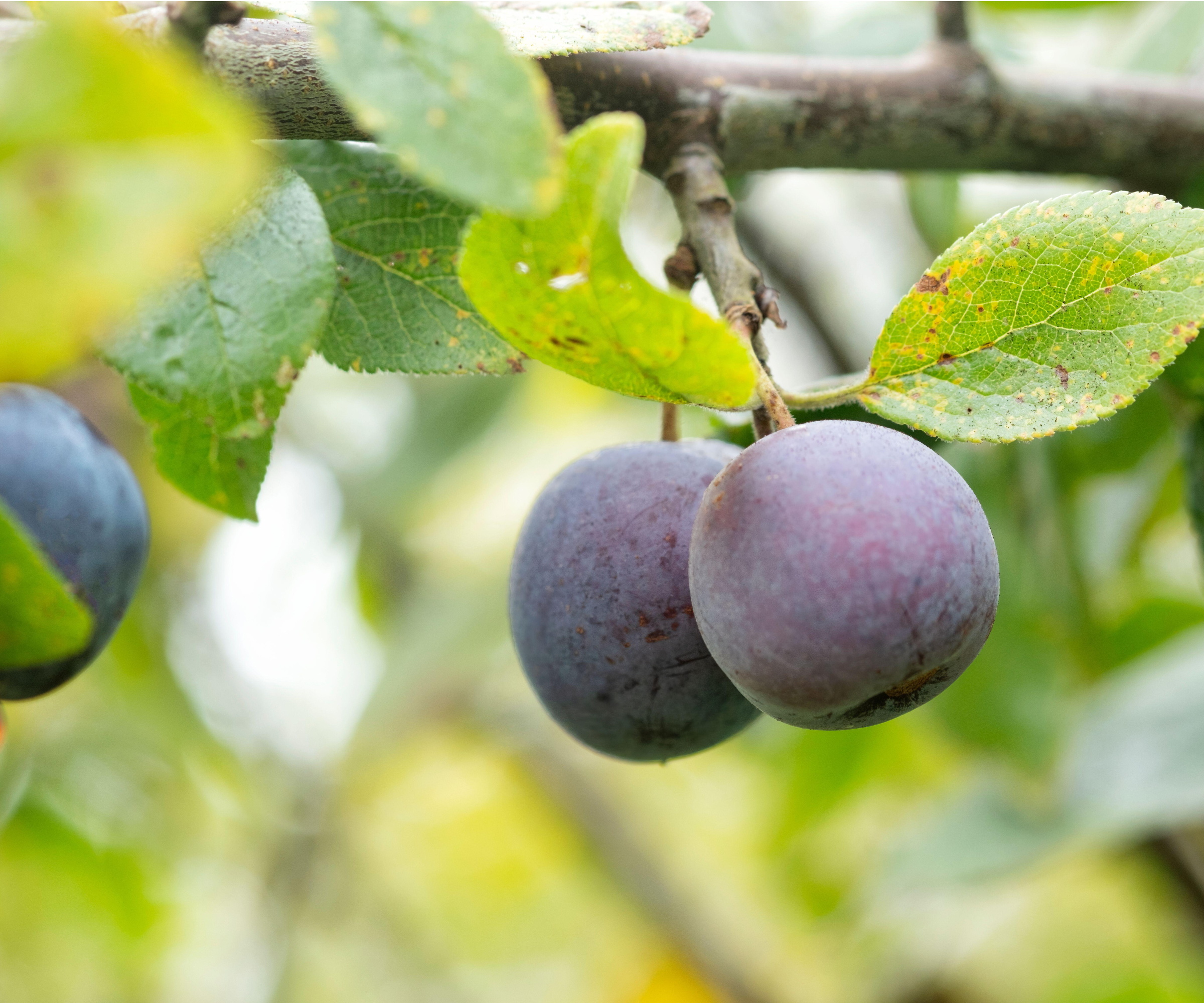How to get a damson tree to fruit – 3 expert tips for growing this tart, purple crop
Making just a few changes to your damson tree's growing environment can bring a large harvest


Damsons are closely related to plums, but are usually much smaller and less sweet-tasting. Although quite tart to eat, they're a valuable ingredient for making jam and incorporating in a range of desserts, which is why many gardeners choose to grow them in their yards.
As with all fruit trees, it can be quite disheartening when your damson tree isn't bountiful. This is especially true when you have spent time nurturing and caring for your tree all year, just for the fruiting season to lack a harvest. The good news, however, is that just like getting a plum tree to fruit, there are a few things you can do to get a damson tree to fruit.
Whether you need to reposition your potted damson tree or make adjustments to its soil, there's usually a solution to a damson lacking fruit. Here are three things you can try to get you started.

3 ways to get a damson tree to fruit
The first thing to know about getting a damson tree to fruit is it grows best across US hardiness zone 5 to zone 7. It's also worth noting young damson trees are unlikely to produce any fruit:
'They typically fruit late summer to early autumn, depending on your climate,' says Valeria Nyman, fruit growing expert and Chief Product Officer at Taim.io. 'But, they don’t rush into it. Young trees might take three, even five, years before they produce anything,' she adds.
With that in mind, here are three things you can try to get a damson tree to fruit.
1. Grow your damson tree in well-draining soil

Even the easiest fruit trees to grow won't perform well when sitting in oversaturated soil. That's why it's key for your damson tree to grow in a well-draining soil type.
Design expertise in your inbox – from inspiring decorating ideas and beautiful celebrity homes to practical gardening advice and shopping round-ups.
'Heavy, waterlogged clay, is a hard no. Too much sand, also no. You want to aim for that happy medium, and work in organic matter for a bit of a nutrient boost,' explains Valeria.
Loamy soil typically works well for damson trees, not drying out too quickly and making it easier to keep the tree at a consistent moisture level.
If you're unsure what soil type you have, use this soil test kit from Amazon. You can then amend soil as needed - for small damson trees growing in pots, this is much easier to do. For example, you can add things like perlite (from Amazon) into the mix to aid drainage.
Along the same lines as drainage, make sure not to overwater your damson tree as it could cause the soil to become waterlogged.
'Too much water and the roots drown, too little and the tree will sulk,' Valeria says. 'Deep, consistent watering during dry spells is key, especially in the spring when they’re setting flowers and also in summer when they’re setting fruit,' she explains.

Valeria is the Chief Product Officer at Taim.io, an innovative platform that serves as a personal, adaptive gardening coach, offering tailored weekly advice to users. Her areas of expertise include growing your own food.
2. Provide your damson tree with plenty of sunlight

A key element of getting an apricot tree to fruit, getting a mulberry to fruit, and any other tree to fruit is providing plenty of sunlight. Damsons are no different.
'Too much shade and damsons will prioritize survival over fruiting,' Valeria notes. 'If your tree is overshadowed by taller trees or walls, you'll probably need to give it a sunnier home,' she adds.
If you're growing your damson as one of the easiest fruit trees in pots, you simply need to move its container to a sunnier spot. A south-facing garden wall would work well, or even a sunny patio kitchen garden.
However, if your damson is larger or planted out, it isn't so easy to provide them with more sun exposure. Although, you can try pruning tree branches of any surrounding trees casting shade over your damson to let more light in.
3. Protect your damson tree from frost

'Damsons are self-fertile, so they don’t need a pollination buddy,' Valeria notes. As a result, you don't need multiple damson trees or cross-pollination in order to grow the fruit. Instead, damsons self-pollinate.
What this means, though, is that you need to put extra precautions in place to ensure a damson can self-pollinate successfully.
'It needs to be protected from frost when the blossoms are forming to get a good harvest,' says Annette Hird, expert gardener at Easy Urban Gardens.
Failing to protect these plants from frost in spring could cause damson blossom buds to drop off. As a result, pollination won't be able to occur.
For best results, put precautions in place until after the threat of late frost has passed. You can use these horticultural fleeces from Amazon, for example, or even use bed sheets to protect your plants from frost. If you have a potted damson tree, you can even move it somewhere sheltered as part of your overwintering a garden checklist.

Annette Hird has an Associate Diploma in Horticulture and is an urban gardening expert. She has worked as a professional propagator and managed, maintained and improved many urban and rural gardens. She also enjoys growing her own fruit, vegetables, herbs and flowers as well as many different types of ornamental plants.
FAQs
Will fertilizer help damson trees fruit?
Absolutely. Fertilizing a damson tree during spring and summer can aid fruiting. It's important to pay attention to plant fertilizer numbers when selecting a plant food for your damson tree - a higher potassium number will boost fruit production. This fruit tree fertilizer from Amazon is a good choice. Make sure to read up on how to fertilize fruit trees to ensure you feed your damson tree correctly and avoid common fertilizing mistakes.
Damson trees are generally thought to be reliable fruiters, so once you make some adjustments to their growing environment and continue providing optimal care, you can expect an abundant harvest for years to come. Don't forget to also keep on top of pruning your fruit trees to keep them neat and in a healthy condition.

Tenielle is a Gardens Content Editor at Homes & Gardens. She holds a qualification in MA Magazine Journalism and has over six years of journalistic experience. Before coming to Homes & Gardens, Tenielle was in the editorial department at the Royal Horticultural Society and worked on The Garden magazine. As our in-house houseplant expert, Tenielle writes on a range of solutions to houseplant problems, as well as other 'how to' guides, inspiring garden projects, and the latest gardening news. When she isn't writing, Tenielle can be found propagating her ever-growing collection of indoor plants, helping others overcome common houseplant pests and diseases, volunteering at a local gardening club, and attending gardening workshops, like a composting masterclass.